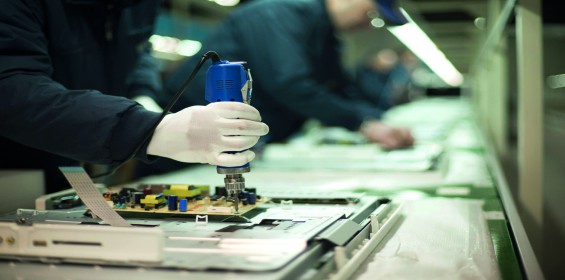Manufacturing savings with CHP
Published: 09 July, 2019
Manufacturing is an energy-hungry industry, requiring huge quantities of both heat and electricity. This high demand for energy means that the manufacturing sector is ideally suited to take advantage of Combined Heat and Power (CHP) systems. However, making the investment requires some careful consideration, says Nigel Thompson, sales manager – Gas Power Solutions at Finning UK & Ireland (Finning).
The manufacturing sector is the UK’s biggest energy user, accounting for 16.5% of national demand. Every year plants and factories all over the country use the equivalent of 27.7m tonnes of oil, producing a varied range of goods.
As vital as the sector is, there will always be calls to reduce energy use for both environmental and financial reasons. Although there are substantial initiatives in place across the industry to help boost efficiency, it is also possible to reduce the financial and environmental costs of producing the energy in the first place. This can be difficult for companies that rely almost entirely on electrical power, but many products also require huge amounts of heat at various points in the manufacturing process.
Indeed, according to a report commissioned by the UK government the industrial and manufacturing sector uses roughly the same amount of natural gas as it does electricity – most of which is used to produce process heat and steam.
Combining processes, reducing costs
As the name suggests, CHP - sometimes known as cogeneration – is a technology based around generating both electricity and heat from a single fuel source.
This is a valuable technology because producing heat and power at the same time is significantly more efficient than generating them separately. Conventional power stations produce their electricity by driving turbines with steam that is usually just released from a plant‘s chimney.
This waste is a natural consequence of the fact that electricity is so much easier to transport than heat. The heat lost in the form of steam clouds is more than balanced out by the economies of scale enjoyed by large power plants, making the excess energy expendable.
When it comes to manufacturing plants, however, many have a large enough demand for both heat and power, so installing a system capable of producing both on-site can generate significant savings, compared to simply buying power in and relying on a conventional boiler system.
Studies show that by taking advantage of the heat wasted in conventional power generation, CHP plants can reach efficiencies of more than 80%, while coal and gas fired plants struggle to achieve more than 40%.1 For users that see substantial portions of their budgets eaten up by energy bills, this increase in efficiency can generate significant savings. In a recent report, the Association for Decentralised Energy estimated that a properly sized CHP system could reduce an industrial user’s primary fuel use by up to 30%. 2
Funding your system
There are many benefits to installing a CHP system, but there are also a few barriers that need to be overcome before companies can start enjoying its benefits. The biggest of these is undoubtedly up-front expenditure, even though this will pale in comparison to the savings a system generates over its lifetime.
Even a mid-sized manufacturing plant will be considering an investment of several hundred thousand pounds, possibly edging into seven figures for bigger sites and more advanced technology.
As well as this, in many cases it can make more sense to lease a CHP system, rather than purchase it outright. This may be in the form of a hire purchase, a finance lease or an operating lease.
Under a hire purchase agreement, the purchasing company pays a series of payments over several years. The CHP system would initially remain the property of the supplier, but the customer becomes the legal owner once all the agreed-upon payments have been made.3
This all-but eliminates one of the biggest barriers to investment, and allows the customer to ensure that its buys the system that is most appropriate, rather than basing the purchasing decision on what fits best on the current balance sheet.
Invest in your investment
Once a company decides to make an investment, it still pays to ensure that the operator maintains their commitment to quality. After all, when budgets are tight, it can be tempting to try and make savings wherever possible. This can potentially lead to companies trying to cut corners by getting a cheaper deal on support equipment or by opting out of an operation and maintenance (O&M) contract.
This, however, is not recommended. Assuming a standard 20-year lifespan for a system, the maintenance costs alone will likely be larger than the initial outlay, so the quality of the product plays a vital role in its financial performance.
Fuel costs will be an even larger component of the lifetime costs of a system, making up as much as 75% of the overall spend. Investing in a more efficient product can generate big savings in the long run.
***************
Department for Business, Energy & Industrial Strategy, Combined Heat and Power, https://www.gov.uk/guidance/combined-heat-and-power
2 The Association of Decentralised Energy, Backing Industrial Productivity: The Combined Heat and Power Opportunity, http://www.theade.co.uk/medialibrary/2015/12/07/166db3ef/Backing%20industrial%20productivity%20-%20the%20opportunity%20for%20combined%20heat%20and%20power_web.pdf
3 Department of Energy and Climate Change, CHP Finance, https://www.gov.uk/government/uploads/system/uploads/attachment_data/file/345190/Part_5_CHP__Finance.pdf







